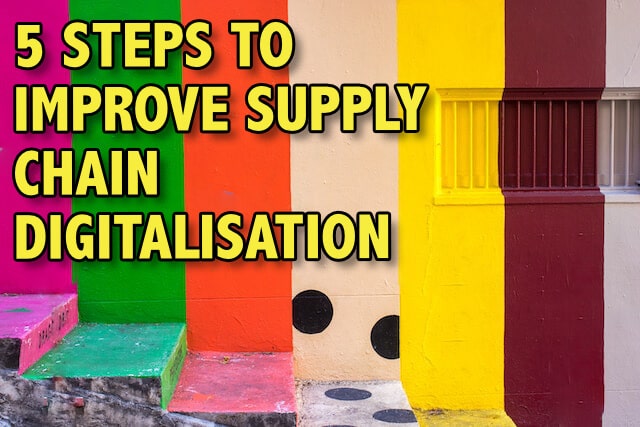5 Steps to improve Supply Chain Digitalisation
To improve supply chain digitalisation, leading to increased efficiencies and reduced costs, businesses can take the following five steps:
- Assess Current Processes and Identify Areas for Improvement: Conduct a thorough evaluation of existing supply chain processes to identify bottlenecks, inefficiencies, and areas that can benefit from digitalisation. This step involves gathering data, analyzing workflows, and understanding your pain points.
- Define Clear Digitalisation Goals: Set specific, measurable, attainable, relevant, and time-bound (SMART) goals for the digitalisation of the supply chain. These goals can include enhancing visibility, optimising inventory management, reducing lead times, improving collaboration, or streamlining order fulfillment.
- Invest in Appropriate Technologies: Identify and invest in the right digital tools and technologies that align with the defined goals. This can include implementing an enterprise resource planning (ERP) system, adopting a cloud-based supply chain management platform such as Celtrino’s Supply Chain Connect, leveraging advanced analytics and data visualization tools, or exploring emerging technologies like blockchain or Internet of Things (IoT) devices.
- Integrate Systems and Improve Data Sharing: Enable seamless integration and data sharing between various systems and stakeholders within the supply chain. This integration can involve connecting suppliers, manufacturers, distributors, logistics partners, and customers through a centralized EDI platform or using application programming interfaces (APIs) to enable real-time data exchange.
- Continuously Monitor, Analyze, and Adapt: Implement robust monitoring and analytics capabilities to gain insights into supply chain performance. Leverage key performance indicators (KPIs) and data analytics to measure progress, identify areas for further improvement, and make data-driven decisions. Regularly review and update your digitalisation strategies to adapt to changing market conditions and technological advancements.
Remember that the specific steps and priorities for digitalisation may vary depending on the business’s industry, size, and unique requirements. It is essential to customize the digitalisation approach to suit the specific needs of the supply chain. Contact Celtrino today to see how we can help your supply chain digitalisation journey.


